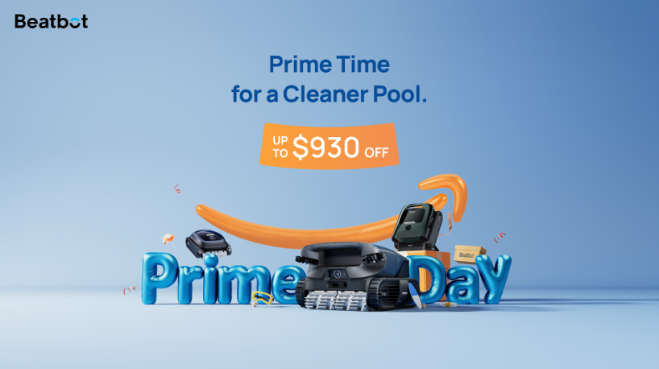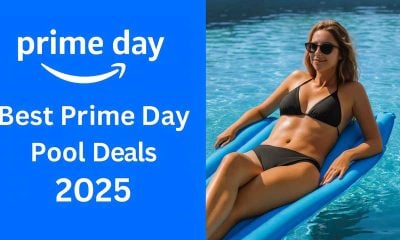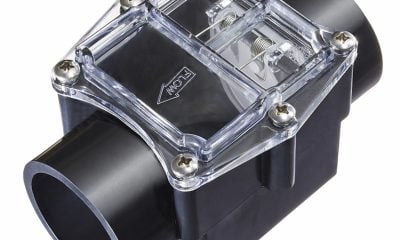Industry News
A New Technique to Eliminate Pool Cyanuric Acid

In the past couple of years, if you’ve been keeping up with the news on the pool industry, you might have encountered a few things on cyanuric. This includes the required levels of cyanuric to maintain the pool safe and what transpires when the levels are too high and cause problems. We are familiar with suggestions like diluting or even draining and refilling as a way to eliminate pool cyanuric acid. However, did you know there was an alternative method without the need to drain your pool? Draining and refilling tons of pool water may not be a problem to some, though this method is appreciable to those with water restrictions or those all about conservation.

A year ago, at the IPSPE in New Orleans, Rudy Stankowitz pronounced a pool cyanuric acid removal technique from a swimming pool centered on his study. He presented on the use of Aluminum Sulfate, or Alum, a coagulation agent responsible for water purification. The agent eliminates some cyanuric (CYA) out of the pool water in the coagulation process. Moreover, it minimizes phosphates and gets rid of any other microscopic impurities.
Process and outcome of eliminating pool cyanuric acid
Alum-CYA elimination method:
1. Regulate the pH to 7.0.
2. Alter the Total Alkalinity to 80-120 ppm, Water Temperature to 70-90 degrees Fahrenheit, Calcium Hardness to 200-400 ppm.
3. Make sure the pool has no heavy debris that could disintegrate the floc when vacuuming to waste.
4. Measure the levels of Cyanuric acid.
5. Preparing for the filtration process;
- Sand and DE Filters: While the pump is off, control the multiport valve to recirculate position.
- Cartridge Filters: While the pump is off, eliminate the filter element, then reassemble without it.
6. Add the Aluminum Sulfate. For every 10,000 gallons of water, add 8.33lbs of Aluminum Sulfate.
7. Set the timer at 2 hours and let the pump run before shutting it off.
- Do away with the ‘ON’ tripper on the time clock or set automation to service, and set an egg timer to prevent unintended circulation.
8. Let the pump stay off for a minimum time of 12 hours. Do not let the pump run till the whole procedure is complete; all valves are in their accurate position and all elements substituted.
9. Using a portable vacuum system, vacuum the floc to waste slowly to avoid stirring or disintegrating the floc.
10. Asses the remaining aluminum level (ought to be less than 0.2 ppm).
11. Examine the level of Cyanuric Acid.
Generally, it is quite an easy procedure. The water temperature, pH, alkalinity is crucial. Have these three factors set, measure the pool volume, calculate your doses and follow the guidelines above to get your pool water clear, a content customer, and a proud you. It is a cool process if you are yet to try it. The water becomes cloudy, and on returning the following day, all the floc is on the pool bottom waiting vacuuming. Gather your tools and equipment, clean, refill and rebalance the water, and that’s it.
Observe the outcome
Many people can confirm that this method works, including these two experts below who narrate their experience.
John Poma, A+ Pool Service, Lakeland Fla, states that he has seen an approximate 50% drop in pool cyanuric acid by only dispensing 8 lbs aluminum every 10,000 gallons of water in a 19,000-gallon pool with a water temperature of 80 degrees in about 12 hours.
Aimee Clark Olds, All N One Pools, Lafayette La, also affirms that Alum has been their go-to when in need to minimize CYA without draining water. He also notes that they have had up to 10 ppm levels dropped with a small dose of 3 Ibs per 10,000 gallons in a single treatment.
From a small but increasing number of field tests, levels of CYA drop constantly in the range of 20-30%. Using a SpinLab for experiments, pool cyanuric acid levels drop from 165 to 130 and 140 to 115. In addition, interaction with people online gives similar successful outcomes. From the statistics we have, we are beginning to perceive that this is a viable option for reducing pool cyanuric acid. Alum was a way to treat water from way back in ancient Egypt, so it’s not a new product, neither is it too expensive, though it is effective for water treatment.
Currently, it is essential to have more testing to collect more data and validate the outcome. The conversation over the past year has been positive, but we’d require more persons to aid in the collection of more data to test this theory. That’s where you come in, test the process and add your feedback to help in our research.
Few Facebook groups involved in this conversation are 14PSI Pool Industry Lounge and Talking Pools. We would appreciate hearing your feedback on the matter as well. Considering the events of 2020, we are efficiently using social media platforms like the two above to assist the public and encourage better practices while keeping safe. We are anticipating your comments to better our industry for all stakeholders.
Industry News
Beatbot Announces Prime Day Deals on Award-Winning AquaSense 2 Pool Cleaning Robots

Richmond, TEXAS, July 3, 2025 – Beatbot, a global leader in cutting-edge robotic pool cleaning technology, is thrilled to announce exclusive Prime Day deals on its best-selling AquaSense 2 series. From July 5 to July 11, customers can enjoy significant savings on AquaSense 2, AquaSense 2 Pro, and AquaSense 2 Ultra, with discounts of up to 38% off regular prices.
Prime Day Deal Details:
• July 5–11
○ AquaSense 2 Ultra: from $3,550 to $2,839 (20% off)
○ AquaSense 2 Pro: from $2,899 to $1,969 (32% off)
○ AquaSense 2: from $1,599 to $999 (38% off)
Additionally, shoppers can take advantage of an incredible 47% discount on the iSkim Ultra, priced at just $799 (originally $1,499) from July 8 to July 11.
“Prime Day is the perfect opportunity for pool owners to upgrade their cleaning experience with our advanced AquaSense 2 robots,” said York Guo, CMO at Beatbot. “These deals make cutting-edge pool maintenance more accessible than ever, ensuring a sparkling clean pool with minimal effort, backed by our industry-leading 3-year full guarantee, including complete product replacement for peace of mind.”
The AquaSense 2 series combines smart navigation, powerful scrubbing, and energy-efficient performance to keep pools pristine throughout the entire season.
Beatbot Trade-In Program: Upgrade Your Pool Cleaning Experience
For a limited time, Beatbot is offering up to $200 in credit when you “trade in” your old pool cleaner, regardless of brand, on Beatbot’s official website. Simply upload a photo of your current robot, and you’ll receive an exclusive coupon via email within 24 hours. Use it toward any AquaSense 2 model and experience Beatbot’s award-winning technology.
This hassle-free upgrade program makes switching easier than ever. Promotion cannot be combined with other offers.
Don’t miss out on these limited-time offers! Visit Beatbot Amazon Store or its Official Website to shop the deals and revolutionize your pool cleaning routine.
About Beatbot
Beatbot is the fastest-growing robotic pool cleaning brand globally, revolutionizing swimming pool care through cutting-edge automation. Founded by industry experts with decades of experience in robotics, Beatbot combines sleek, durable design with unmatched engineering, earning global acclaim, including the prestigious iF Design Award and Red Dot Award for its premium aesthetics and user-centric innovation.
With offices worldwide and a powerhouse R&D Team (70% of its workforce), Beatbot pioneers core technologies like brushless water pumps, AUV spatial locomotion, sonar laser SLAM, and AI-powered mapping algorithms. The company holds 221+ patents (128 for inventions), cementing its leadership in redefining pool maintenance.
From award-winning product design to hassle-free smart solutions, Beatbot is committed to transforming how the world cleans its pools—elevating performance, sustainability, and luxury.
Learn more: www.beatbot.com
Industry News
Insights with POOLCORP Vice President of Marketing, Kendall Large

POOLCORP, the world’s largest wholesale distributor of swimming pool supplies and equipment, is celebrating several major milestones in 2025—including its 30th anniversary as a publicly traded company. But despite decades of success, the company shows no signs of slowing down. To learn more about how POOLCORP is continuing to evolve while supporting both its customers and the broader industry, we spoke with Kendall Large, Vice President of Strategic Marketing.
A Year of Milestones for POOLCORP
For POOLCORP, 2025 isn’t just another year—it marks a series of significant anniversaries. “It’s our 44th year in business and our 30th anniversary as a public company,” said Large. “When I sit back and think about all we’ve accomplished since our humble beginnings in 1981 as South Central Pool Supply, it’s really astounding.”
POOLCORP has grown from a regional operation into a global distribution giant, with nearly 450 locations across the U.S., Mexico, Canada, Europe, and Australia. Large attributes this growth to a customer-first strategy and a willingness to invest in people and infrastructure. “We’ve always aimed to be in the right market at the right time with the right product. And most importantly, it’s our people—over 6,000 employees, including the largest sales force in the industry—who make it happen.”

The Pinch A Penny Acquisition: Strategic Synergy
POOLCORP’s recent acquisition of Pinch A Penny, the country’s largest collection of independently owned pool and spa retail stores, is one of the company’s most impactful strategic moves. While some eyebrows were raised at the move, Large said it was a natural fit.
“Pinch A Penny is made up of independent franchise owners—retailers who can buy from anyone,” she explained. “The way our distribution brands SEP and Superior serve Pinch A Penny is exactly how we serve our independent pool customers: builders, service pros, and subcontractors. There was a lot of synergy already.”
POOLCORP not only gained a significant retail footprint with the acquisition but also inherited a proven model for consumer engagement and technology-driven retail operations. “What Pinch A Penny has perfected is the customer experience for the DIY pool owner. They’re celebrating their 50th anniversary this year, and they’ve built a strong playbook we can now help scale and share.”
Investing in Independent Retailers
That retail expertise has already made its way into POOLCORP’s broader efforts to support independent pool professionals. One major initiative is the company’s annual Retail Summit, which Large described as one of the most successful events POOLCORP has ever hosted.
“We brought together the best independent retailers, the top vendors, and our internal teams for three days of education, training, and innovation,” she said. “It’s all about creating an environment where retailers can learn, grow, and maximize their success heading into the season.”
The summit featured access to new products, special promotions, and hands-on training, all designed to give independent businesses a competitive edge. “This event is something I’m especially proud of,” said Large. “It’s how we help retailers thrive.”
Post-Pandemic Adaptation
Like every company in the pool industry, POOLCORP had to adjust during and after the COVID-19 pandemic. “I entered the industry in 2021, just as things were starting to stabilize,” said Large. “And to be honest, I had no idea what I was walking into. During the pandemic, it was all about moving product. Customer experience and education took a back seat.”
As demand normalized, however, the focus shifted back to service. “Now, the conversation isn’t just about getting any product—it’s about getting the right product. And our team’s experience plays a huge role in helping customers make the best choices,” she said.
POOLCORP has embraced tools like its Blue Streak service, which allows pool professionals to pick up materials without entering the building, improving turnaround times and streamlining the process. “We’ve invested heavily in operational efficiency. Speed at the counter is a key metric for us now—especially for the service pros who are trying to get in and out quickly.”
SWIMPACT: A Broader Mission
Perhaps one of POOLCORP’s most inspiring initiatives is its philanthropic arm, SWIMPACT. Initially focused on swim safety and education, the program has evolved into a broader community relief platform.
“SWIMPACT was originally created to help more kids and adults learn to swim,” said Large. “We partner with local YMCAs across the country and fund comprehensive swim lesson packages. We’re proud to have helped over 52,000 people learn to swim and trained more than 4,000 lifeguards.”

But after a series of recent natural disasters, including hurricanes in Florida and wildfires in California, the program’s scope has expanded. “Last year, I was personally affected by one of the recent hurricanes, and I witnessed firsthand the difference POOLCORP was able to make,” Large recalled. “We trucked in supplies, generators, satellite phones, and water. We even housed emergency responders at one of our facilities.”
This experience prompted the company to formalize disaster relief as part of SWIMPACT’s mission. When fires devastated parts of Southern California, POOLCORP donated $25,000 to the PHTA’s Step Into Swim Fire Relief Fund. “These types of disasters will unfortunately continue to happen, but we’re in a position to help—and we feel a responsibility to do so,” Large said.
Eyes on the Future
With momentum strong heading into 2025, POOLCORP is looking ahead with optimism and energy. One highlight on the horizon: ringing the bell at the NASDAQ in October to celebrate 30 years as a public company.
“We’re bringing the sales leaders who helped make it happen,” said Large. “They’re the ones who’ve led the teams, opened new locations, and driven growth.”
POOLCORP is also doubling down on education and empowerment through its Management in Training (MIT) program and continuing to develop marketing resources through its EDGE program. “Whether it’s national brands, tools to improve efficiency, or marketing support—everything we’re doing is centered on helping our customers succeed,” she said.
And while the company doesn’t always seek the spotlight, Large believes it’s worth acknowledging the scale and substance of POOLCORP’s efforts. “We don’t always make a big splash about ourselves, but when you take a step back and look at the impact we’re making—from customer support to community aid—it’s really something to be proud of.”
As the pool industry heads into another season, one thing is clear: POOLCORP isn’t just distributing product—they’re leading with purpose.
Ready to take a deeper dive?
Listen to our entire conversation with Kendall Large, Vice President of Marketing with POOLCORP on the Pool Magazine Podcast.
Industry News
Flipping the Script: The Review Site Where Pool Contractors Rate Customers

In an industry where customers have long held the power of public review, a new platform is flipping the script—and service professionals are paying attention. Mike Meadows, a seasoned pool pro, has created something unique with CustomersKarma.com, a review site that allows contractors, service techs, and small business owners to rate and review their customers.
The concept sounds like something many service pros have only dared to dream about. And as Meadows explains, it was born out of necessity.
“We’d finish a job, walk the customer through everything, ask them if they were satisfied—and they’d say yes. Then when it came time to pay, it’s like the anchor dropped,” said Meadows. “It kept happening to me, and I’d hear it from other guys too. We’re putting in the work, sometimes even fronting parts and equipment out of our own pocket, and then fighting to get paid.”
This Review Site Lets Pool Contractors Rate Their Customers
The idea behind Customers Karma is simple: give service professionals a platform for risk assessment, much like credit agencies, medical records, or FICO scores give businesses a clearer picture of consumers. Meadows, who has prior experience in mortgage and auto sales, says those industries have long used data to evaluate who they’re working with.
“They run your FICO score. If it’s low, they know you’re gonna be harder to work with, so they factor that in. But pool guys? We get nothing. No warning,” Meadows explained. “You can be the nicest person on the phone for two minutes and still leave your last pool guy with an unpaid balance and ghost them the next minute.”
Meadows’ review site aims to change all that. Service providers can log on, create a profile for a customer’s address, and leave feedback—positive or negative—based on their experience. It’s free to use for now (though Meadows is considering a $15 annual fee), and reviews can be anonymous, allowing professionals to post without fear of direct retaliation.

How It Works
When a user logs into Customers Karma, they input the customer’s address, which generates a template for that home. Google pulls an image of the house, and from there, the professional can rate the customer and describe their experience. While some have concerns about privacy, Meadows was quick to point out that all reviews are tied to publicly available information—name and address only—and that users are encouraged to focus on verifiable claims.
“We’re not posting social security numbers. We’re not leaking credit card info,” said Meadows. “We’re just posting real, firsthand experiences. ‘I did the work and didn’t get paid.’ That’s all it takes to warn the next guy.”
The question that hit Meadows hardest, and ultimately defined the purpose of the platform, came from one particularly bad review:
“Would you do work for this customer?”
That question, he says, is the cornerstone of the entire platform.

Not Just for Rants—Positive Reviews Welcome
While many people assume a platform like this would become a dumping ground for gripes, Meadows says the opposite is starting to happen.
“We’re seeing more and more five-star reviews,” he noted. “Guys are leaving notes like, ‘I’ve worked with this customer for eight years—always pays on time, great to deal with.’ It’s not just about warning people—it’s also about lifting up the good ones.”

To add an additional layer of protection and context, reviews are tied to addresses—not searchable by customer name or by city-wide queries. You have to know the specific address you’re looking up.
“That was intentional,” said Meadows. “We didn’t want it to be a witch hunt. You’re not going to just browse for dirt. You look up an address you’re about to service, and you see if there’s a pattern.”
Real-World Scenarios
From pool service techs to HVAC installers and pest control pros, users of the platform come from various home service industries. But the strongest adoption by far has been from pool professionals.
“There’s a review from a guy who installed a part, got paid, and a few days later the customer said, ‘I found it cheaper online, pulled it out, and now you owe me a refund,’” Meadows said. “That stuff happens more often than people realize. This gives us a way to warn others.”
He also shared another example where he completed a heater install for a customer in Beverly Hills. Despite saving the client money and completing the job to spec, he spent 24 hours fighting to get paid.
“It was a nightmare,” he said. “I kept asking myself—do I leave a review or let the next guy walk into the same trap?”
Addressing Privacy and Legal Concerns
Naturally, the platform raises questions about legal liability and defamation. Can posting a negative review expose service professionals to lawsuits?
Meadows says he’s consulted with several attorneys, and the consensus is if what you post is true, the law tends to be on your side.
“One lawyer told me, ‘You can sue anyone for anything. But imagine standing in front of a judge and saying this guy posted I didn’t pay him. The first question the judge is gonna ask is: did you pay him?’”
Meadows stresses the importance of keeping reviews factual and avoiding personal attacks.
“Don’t call someone a criminal or say anything you can’t back up. Just tell the truth. I did the work, I wasn’t paid. That’s your protection.”
While the idea of reviewing customers might make some professionals nervous, the platform offers anonymity for those who prefer it. Meadows notes that while most reviews are tied to a business name, the option to post anonymously helps mitigate personal risk.
Risk vs. Retribution
While CustomersKarma.com presents an intriguing shift in the contractor-customer dynamic, it hasn’t come without its share of controversy. Some industry professionals have voiced concerns about privacy, questioning whether posting about clients—especially when tied to a specific address—could open the door to backlash or legal disputes. Customers who stumble upon a negative review about themselves might feel unfairly judged or even retaliate with legal threats. That said, the option to post anonymously offers some protection for service providers, allowing them to share their experiences without revealing their identities. Site creator Mike Meadows, a staunch supporter of the First Amendment, is unapologetic about allowing users to speak their truth. As he put it, “You’re providing true and accurate details… This is my experience with that person.”
Whether Customers Karma is a good idea depends largely on how it’s used. In theory, it’s a valuable tool—especially in industries where contractors have traditionally had little recourse to flag problematic customers. If used responsibly, it could create a fairer, more transparent system where both sides of the service equation are held accountable. But if abused, it could become a digital airing of grievances that undermines professionalism. The real promise of this platform lies in its potential to foster better communication and trust—if users stay focused on facts and avoid personal attacks. As with any new tool, its value will ultimately be determined by the integrity of the people using it.
-

 Trade Shows3 weeks ago
Trade Shows3 weeks agoPool Trade Shows & Industry Events To Attend in 2025-2026
-

 Pool Maintenance2 weeks ago
Pool Maintenance2 weeks agoNJ Municipal Workers Accused of Stealing Pool Chemicals For Their Own Business
-

 Pool News3 days ago
Pool News3 days agoBest Prime Day Pool Deals of 2025
-

 Pool Builder4 weeks ago
Pool Builder4 weeks agoBasin Pool Designs Has The Right Recipe For Creating Spectacular Luxury Pools
-

 Contractors and Builders4 weeks ago
Contractors and Builders4 weeks agoInsurance Premiums on the Rise: How Pool Pros Can Stay Afloat
-

 Products3 weeks ago
Products3 weeks agoPrime Day Dates & Early Deals on Robotic Pool Cleaners
-

 Pool Equipment4 weeks ago
Pool Equipment4 weeks agoBeatbot AquaSense 2 Ultra Sets New Standard for AI-Powered Pool Cleaning
-

 News4 weeks ago
News4 weeks agoSkimmer Announces Public API to Support Custom Enterprise Workflows

































